
 |
Avebury was the first stop on our UK driving adventure to Wales. It's easy enough to get to from London, just off the M-4. In fact, I'm rather puzzled as to why there are so few tours to it, compared with Stonehenge. But according to most guidebook information, you really need a car to get there, at least from London. (My guests who spent a couple of days in Bath did get a tourbus from there, however.) Here is Henry in the Avebury car park with our little Golf:

You can read about some of our adventures getting used to British driving, as well as our trip to Avebury, in this blog post. I also wrote up a Favorite Fotos post with more pictures here, and there are many more in this Flickr set, to supplement the small selection here. In the Flickr set, the first sequence of pictures is of the stone circle, and I've arranged them in the order they were taken, so that you can follow our tour.
As you can learn from the very informative Avebury website, its massive stone circle is of Neolithic origin, and is the centerpiece of an amazing array of archeological wonders in this part of England. (I have included links to particular sections of the website that relate to the photos when I found them. You can learn probably more than you ever wanted to know about the site from these pages!) We learned a lot about the stones—their ancient and more recent history as well as theories about their functions and the culture of their builders—from the tour we were lucky enough to catch soon after our arrival. Our volunteer guide was knowledgeable and entertaining and we strongly recommend that you try to go with one of these tours if you visit, although there are no restrictions keeping you from just wandering around on your own, which is what our kids did on their visit here in September.
Here are a couple of shots which feature the Ditch and Bank which outline the stone circle for most of its circumference. Note, in the photo on the left, the lady sitting just on the inner edge of the bank. She'd set up an easel and was painting the lovely scene.
 |
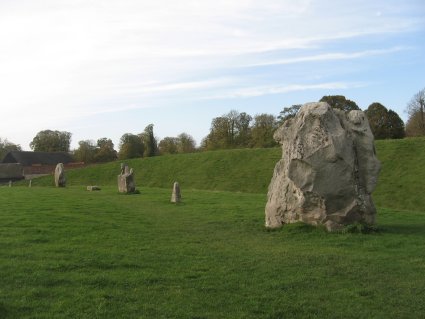 |
Below is a collection of images of the stones we saw as we walked around the circle on our tour. As you can see, they're very much part of the environment of the little village of Avebury; it's almost impossible to take a picture of a group of stones without seeing some houses, or a section of road, in the frame. This interweaving of ancient and modern life is what really makes Avebury special, and what distingushes it most clearly from its more famous cousin on Salisbury Plain. You can read an amazing amount of detail about the stones in this section of the Avebury website.
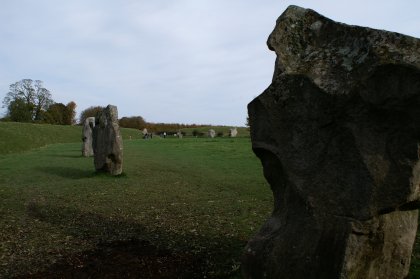 |
 |
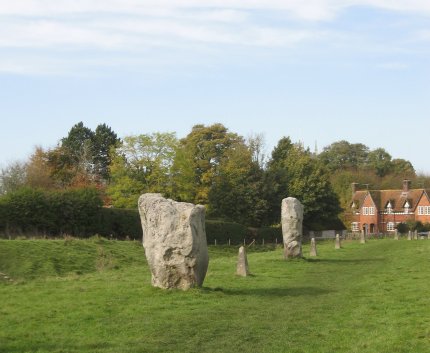 |
||||
|
||||||
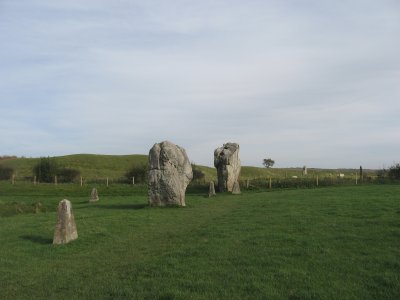 |
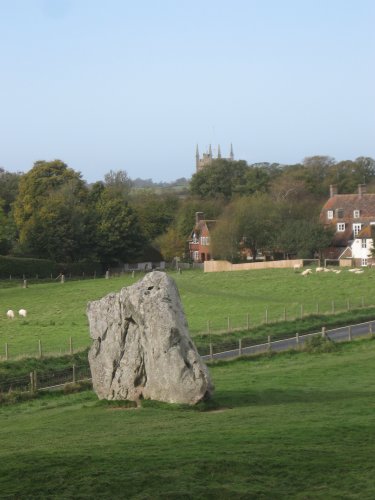 |
 |
||||
In case the scale of the individual stones isn't evident in these pictures, here's one I took with Henry serving to make their size obvious. Admittedly, this is one of the largest ones:
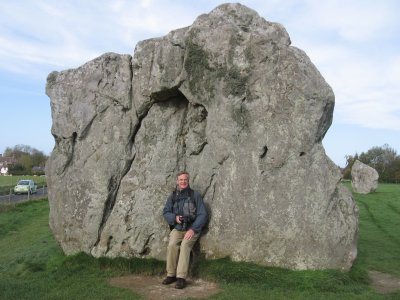
The village of Avebury provides other noteworthy attractions in addition to the stone circle. This page on the website offers more information, including lodging and refreshment options available in the area. A highlight is the church, St. James, which is thought to date from Saxon times. The dovecote, the roundish structure in the photo on the right below, is definitely a Saxon edifice. We found the church offered lots of great photo opps, both outside...
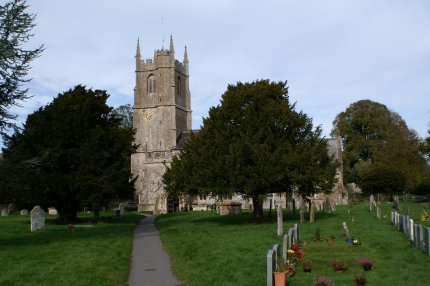 |
 |
|
 |
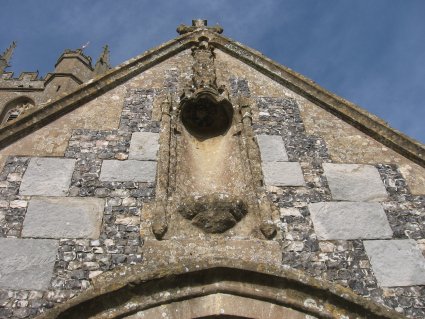 |
|
.... and inside. Note the war memorial over my head in the middle picture, the (possibly) Saxon font on the left, and the lovely window in the deep wall on the right.
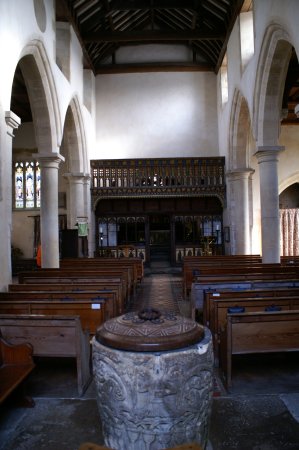 |
 |
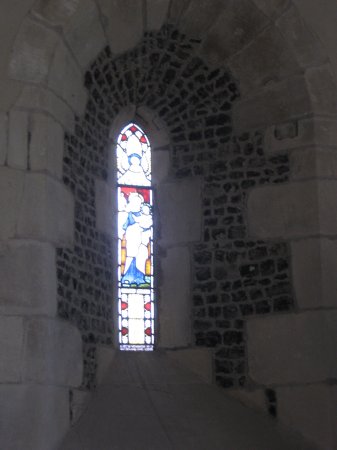 |
You could spend much more than the few hours we did in exploring fascinating prehistoric sites in this part of England. Unfortunately we knew we had a ways yet to travel before dark, and weren't able to see much beyond Avebury in the region. We did stop at remarkable Silbury Hill, the largest mound in Europe, according to the website. It's pretty hard to miss, rising from the Wiltshire landscape, and the explanatory signs you see in the photo on the left gave us a good idea of its archeological importance.
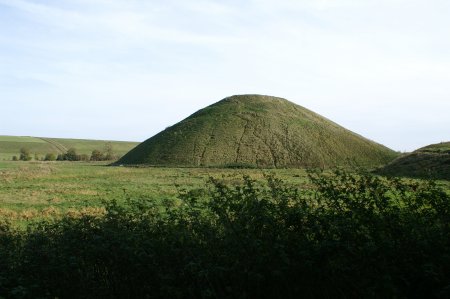 |
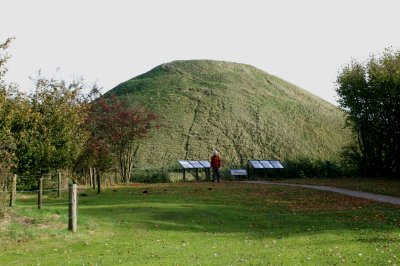 |
We also partook of local fare for a late lunch at the Waggon and Horses (on the left) and enjoyed our meandering journey back to the M-4. The photo on the right gives you an idea of how lovely this part of England is.
 |
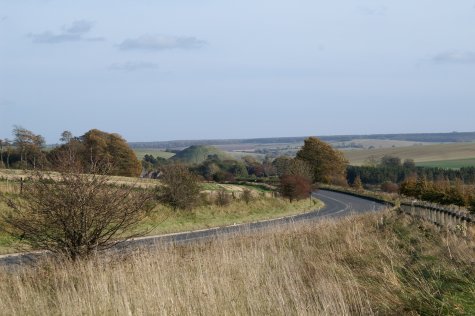 |
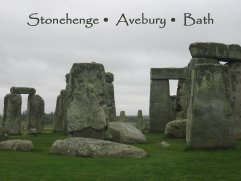 |
Back to Dream Season home • Back to Stonehenge-Avebury-Bath home